Sanwa VG400 Handleiding
Bekijk gratis de handleiding van Sanwa VG400 (7 pagina’s), behorend tot de categorie Radio. Deze gids werd als nuttig beoordeeld door 45 mensen en kreeg gemiddeld 4.3 sterren uit 23 reviews. Heb je een vraag over Sanwa VG400 of wil je andere gebruikers van dit product iets vragen? Stel een vraag
Pagina 1/7

1
VG400 and VG600 FM 4/6 Channel Systems
SECTION I Safety First for Yourself and Others.
SECTION II Federal Licensing Requirements
and Special Operating Standards for
Model Airplanes
SECTION III System Features
SECTION IV Unpacking and setting up your
AIRTRONICS VG400 or VG600
Radio Control System
SECTION V Operation Adjustments
NOTE: FOR BATTERY CHARGING
INFORMATION AND INSTRUCTIONS ON
LEARING TO USE YOUR AIRTRONICS RADIO
SYSTEM, PLEASE SEE THE AIRTRONICS
RADIO OPERATION AND INSTALLATION
INSERT.
THANK YOU FOR SELECTING AIRTRONICS
We appreciate your purchase of this new AIRTRONICS
VG400 or VG600 Radio System.
These instructions are intended to acquaint you with the
many unique features of this modern, state-of-the-art
equipment. Please read them c arefully so that you may
obtain maximum success and enjoyment from its
operation
TRANSMITTER FEATURES AND FUNTIONS
The AIRTRONICS VG400/VG600 Radio Control Systems are
primarily intended for the flying of fixed wing model aircraft.
1. Retractable antenna
2. LED Scale Voltage Display
3. Control stick, horizontal- -ailerons, vertical elevator
(mode 2) Vertical-throttle (Mode 1)
4. Trim lever, elevator (Mode 2); throttle (Mode1)
5. Trim lever ailerons
6. Name Plate
7. Power Switch
8. Trim lever throttle (Mode 2); elevator (Mode 1)
9. T rim lever rudder
10. Control stick, horizontal- -rudder, vertical throttle
(Mode 2) Vertical-elevator (Mode 1)
11. Neck strap connecting hook
12. Servo reverse switches
13. Retract aux Channel (VG600 Only)
14. Trainer button
15. Carrying handle
16. 3 position aux channel flap switch (VG600 Only)
17. Throttle High and Low End point adjustments
18. Ail, Elev, Rud, Flap Servo Travel Adjusters
(VG600 Only)
We ask that you pay particular attention to the design of
the transmitter. Notice that it has been engineered for
the most natural and precise control of your choice of
flying models.
Be certain to read all of the material in this manual, as
well as the Operation and Installation insert.
SECTION I
SAFETY FIRST FOR YOURSELF, FOR OTHERS
AND FOR YOUR EQUIPMENT.
“Safety First” is more than just a slogan when operating
radio control models. Thus, we urge, especially with
respect to radio controlled aircraft that:
FOR YOUR SAFETY:
Recognize that radio controlled models are not harmless
toys and can be dangerous missiles if carelessly or
improperly flown. You are responsible because the
reliability and safe operation of the radio equipment is
largely dependent upon its proper installation and
utilization.
THEREFORE, INSTALL YOUR RADIO CONTROL
SYSTEM CORRECTLY AND BE CERTAIN YOU
CAN FLY WELL ENOUGH TO CONTROL YOUR
AIRCRAFT UNDER ALL CONDITIONS.
POWER
ON
FULLMIDLOW
(1)
(2)
(3)
(4)
(5)
(6)
(7)
(8)
(9)
(10)
(11)
(12)
(13)
(14)
(15)
(16)
(17)(18)
(17)
(12)

2
FOR THE SAFETY OF OTHERS:
Remember that you are responsible for the safety of all
spectators and in fact, everyone that may foreseeably be
injured by your model.
DO NOT FLY where your model could in jure any
person or property.
DO NOT FLY over the heads of spectators or persons in
the area of your flying field. THIS INCLUDES taking
off, actual flight and landing. KEEP EVERYONE,
except experienced and knowledgeable persons who are
assisting you in fly ing, away from your model even
when it is on the ground and you are preparing to fly.
DO NOT FLY unless and until you have an experienced
instructor who has completely checked out the model
and will fly the model for you and with you…until you
have learned to fly competently by yourself.
Flying is a real skill that demands patience, practice and
caution. DO NOT EXPERIMENT or run risks. Know
that you can fly safely before you fly alone. The real
pleasures and satisfactions come from flying or
operating your model with safety and competence
always in mind.
AT THE FIELD:
DO NOT FLY unless your frequency is “clear”. The
transmitting signal channel (frequency) is shown on the
transmitter and you must not turn on your transmitter
when someone is flying or operating their model on that
same frequency.
WARNING: IF YOU DELIBERATELY OR
ACCIDENTALLY TURN ON YOUR
TRANSMITTER WHILE ANOTHER MODEL IS
FLYING OR IN OPERATION, THAT MODEL WILL
GO OUT OF CONTROL. The same will happen to
yours, so observe to see if your frequency is open before
turning your transmitter on. Only one person uses a
given frequency at a time. Use your channel identifier
(frequency) flags for the frequency your system uses
and attach the appropriate flags to your transmitter
antenna. DO OBSERVE all the rules of the flying or
operating site. The Channel and frequencies associated
with them are as follows:
72 MHz (Aircraft Only)
CHANNEL and FEQUENCY (MHz)
11 31 72.010 MHz 72.410 MHz
12 32 72.030 MHz 72.430 MHz
13 33 72.050 MHz 72.450 MHz
14 7 34 2.070 MHz 72.470 MHz
15 35 72.090 MHz 72.490 MHz
16 36 72.110 MHz 72.510 MHz
17 37 72.130 MHz 72.530 MHz
18 38 72.150 MHz 72.550 MHz
19 39 72.170 MHz 72.570 MHz
20 40 72.190 MHz 72.590 MHz
21 41 72.210 MHz 72.610 MHz
22 42 72.230 MHz 72.630 MHz
23 43 72.250 MHz 72.650 MHz
24 44 72.270 MHz 72.670 MHz
25 45 72.290 MHz 72.690 MHz
26 46 72.310 MHz 72.710 MHz
27 47 72.330 MHz 72.730 MHz
28 48 72.350 MHz 72.750 MHz
29 49 72.370 MHz 72.770 MHz
30 50 72.390 MHz 72.790 MHz
50 55 72.790 MHz 72.890 MHz
51 56 72.810 MHz 72.910 MHz
52 57 72.830 MHz 72.930 MHz
53 58 72.850 MHz 72.950 MHz
54 59 72.870 MHz 72.970 MHz
55 60 72.890 MHz 72.990 MHz
WARNING:
The frequencies allocated for model radio exclusive;
however, they are in close proximity to o ther types of
radio use in certain areas. Before operating your model
check with the Federal Communications Commission
(FCC) Regional Office in your area to determine
whether there is a potential danger of interference from
other radio users. “Outside” radio interference may
cause you to lose control of your model, possibly
causing injury to yourself, to others or property damage.
SO REMEMBER:
1. DO NOT OPERATE your transmitter at the field
until you are certain your frequency is “clear”.
2. DISPLAY your frequency channel identification
flag on the antenna of your transmitter.
3. REMEMBER that channel identifier flags do not
usually state the frequency on them. Ask and be
certain. If you have an eyesight limitation or defect
such as color blindness for example, double check
to be sure of the channel flag designations.
4. Turn your transmitter on only when you are sure
no one else is using your frequency.
5. WARNING: Your model will go out of control and
may do serious injury or damage if someone else
turns on a transmitter on your frequency while you
are operating your model.
6. Respect all the rules of the flying field or site.
7. At any time during the operation of your model,
should you sense, feel or observe any erratic

3
operation or abnormality, end your flight as
quickly and as safely as possible. DO NOT operate
again until you are certain the problem has been
corrected. TAKE NO CHANCES.
ADDITIONAL WARNING:
Radio controlled models are generally attractive,
exciting and inviting in looks and performance.
Therefore, realize that young persons, children and
inexperienced adults may come within the operating
range of the model, so that they may try to operate the
equipment without understanding the dangers to that
person or others. It is your responsibility to guard
against u nskilled and unknowing hands for their
protection as well as for the safety of your equipment
and model.
The key to R/C pleasure is the proper use of your
system and all of the other model components. If you
fail to follow instructions, heed the warnings given,
misuse or abuse the system through improper operation
or installation, the consequences will damage your
system and may also mean injury to yourself, other
people or property of others.
AS TO YOUR EQUIPMENT:
The care you give to your equipment, and its correct
installation and operation, are the factors that spell
either safe, successful flying or injury, damage,
destruction and loss.
ACADEMY OF MODEL AERONAUTICS (AMA)
The Academy of Model Aeronautics is the leading
national organization made up of aircraft modeling
people with headquarters in Muncie Indiana. Their
address is 5151 East Memorial Dr., Muncie IN 47302.
We urge you to examine the benefits of the membership
including liability protection in the event of certain
injuries. The Academy has adopted simple and sane
rules, a few which are pertinent for radio controlled
flight as the OFFICAL AMA SAFETY CODE; abide by
these rules for your protection, the protection of others
and equipment. Excerpts are as follows:
1. I will not fly my model aircraft in competition or in
the presence of spectators until it has been proven
to be airworthy by having been previously
successfully flight-tested.
2. I will not fly my model higher than approximately
400 feet within 3 miles of an airport without
notifying the airport operator. I will give right of
way to and avoid flying in the proximity of full-
scale aircraft. When necessary, an observer shall
be utilized to supervise flying to avoid having
models fly in the proximity of full-scale aircraft.
3. Where established, I will abide by the safety rules
for the flying site that I use, and I will not willfully
and deliberately fly my models in a careless and/or
dangerous manner.
4. I will have completed a successful radio equipment
ground range check before the first flight of a new
or repaired model.
5. I will not fly my model aircraft in the presence of
spectators until I become a qualified flyer, unless
assisted by an experienced helper.
6. I will perform my initial turn after takeoff away
from the pit, spectator areas, and I will not
thereafter fly over pit or spectator areas, unless
beyond my control.
7. I will operate my model using only radio control
frequencies currently allowed by the FCC. (Only
properly licensed amateurs are authorized to
operate equipment on amateur band frequencies.)
NOTE: These basic safety precautions are for your
safety, the safety of others, and of your equipment.
Consider carefully all of what has been stated and obey
all precautions as well as those appropriate to your
particular use. Good common sense must also be used at
all times in the operation of your equipment.
STICK CONTROLS
Fig 3
SECTION II
FEDERAL LICENSING REQUIREMENTS AND
SPECIAL OPERATING STANDARDS FOR MODEL
AIRPLANES
The Federal Communications Commission no longer
requires a license to operate an R/C model transmitter.
However, the Federal Aviation Administration has
announced guidelines for operation of model aircraft.
We are reprinting those guidelines here and encourage
your study and cooperation.
Left
Rudder
High Throttle
Low Throttle
Down Elevator
Up Elevator
Right
Aileron
Left
Rudder
High Throttle
Low Throttle
Down Elevator
Up Elevator
Right
Aileron
Mode 2
Mode 1
Product specificaties
| Merk: | Sanwa |
| Categorie: | Radio |
| Model: | VG400 |
Heb je hulp nodig?
Als je hulp nodig hebt met Sanwa VG400 stel dan hieronder een vraag en andere gebruikers zullen je antwoorden
Handleiding Radio Sanwa

19 December 2023

19 December 2023

19 December 2023

19 December 2023

12 Augustus 2023
Handleiding Radio
- OnLyee
- Navman
- Revo
- Renkforce
- BasicXL
- AudioAffairs
- BLUEPALM
- Ryobi
- TFA Dostmann
- Xiaomi
- Roth
- Pyle
- August
- Audac
- Harman Kardon
Nieuwste handleidingen voor Radio
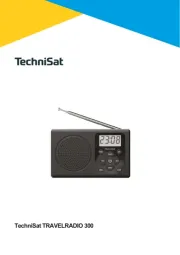
16 September 2025
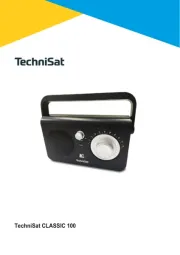
15 September 2025

15 September 2025
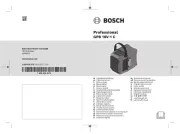
15 September 2025

13 September 2025
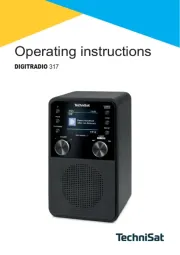
13 September 2025
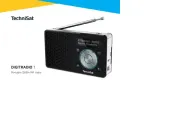
12 September 2025
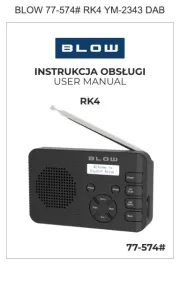
9 September 2025
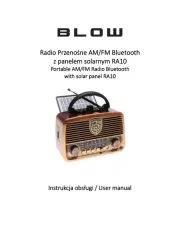
8 September 2025
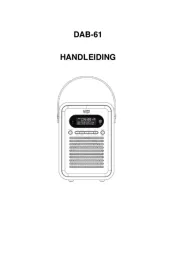
8 September 2025